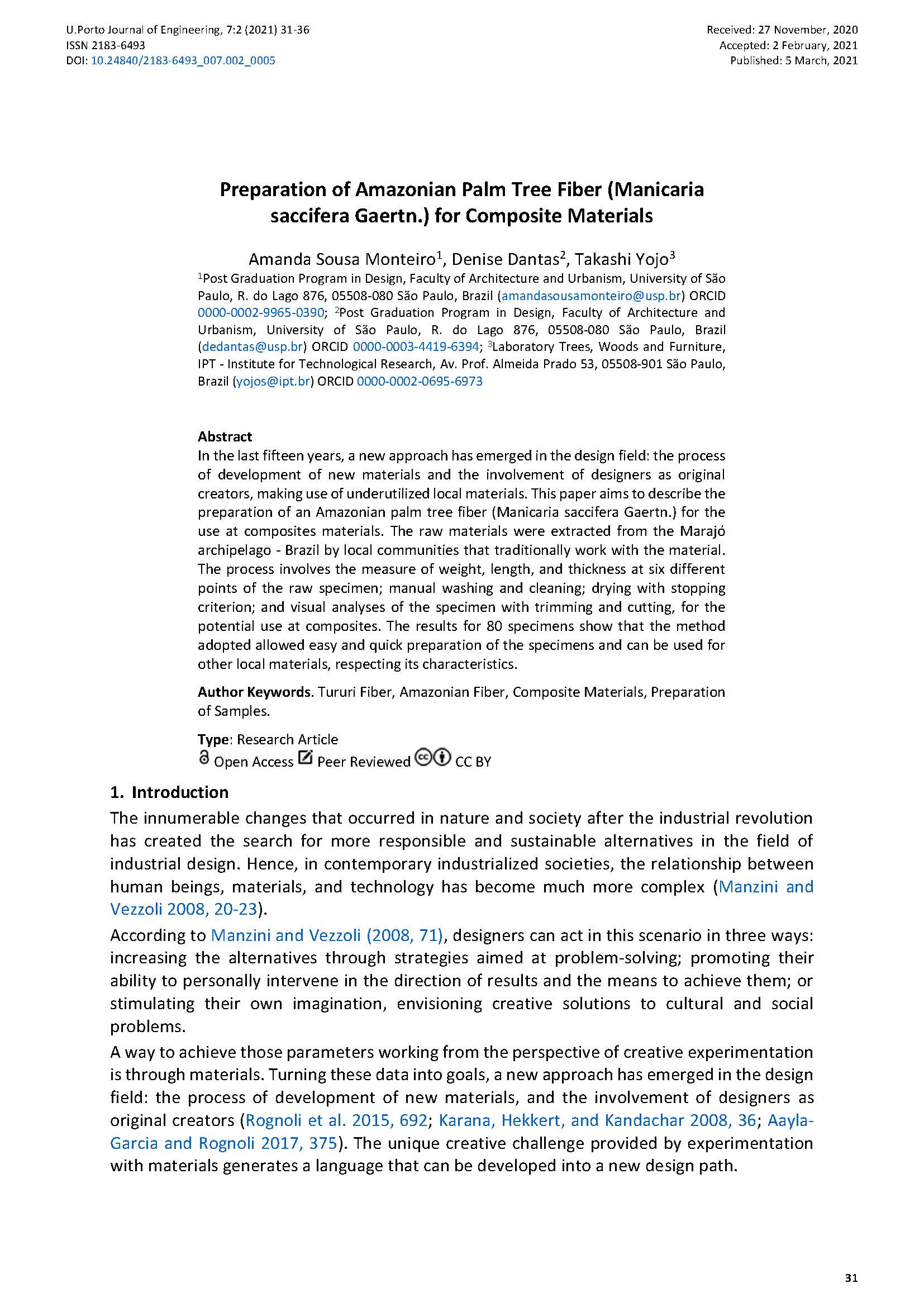Preparation of Amazonian Palm Tree Fiber (Manicaria saccifera Gaertn.) for Composite Materials
Main Article Content
Abstract
In the last fifteen years, a new approach has emerged in the design field: the process of development of new materials and the involvement of designers as original creators, making use of underutilized local materials. This paper aims to describe the preparation of an Amazonian palm tree fiber (Manicaria saccifera Gaertn.) for the use at composites materials. The raw materials were extracted from the Marajó archipelago - Brazil by local communities that traditionally work with the material. The process involves the measure of weight, length, and thickness at six different points of the raw specimen; manual washing and cleaning; drying with stopping criterion; and visual analyses of the specimen with trimming and cutting, for the potential use at composites. The results for 80 specimens show that the method adopted allowed easy and quick preparation of the specimens and can be used for other local materials, respecting its characteristics.
Downloads
Article Details

This work is licensed under a Creative Commons Attribution 4.0 International License.
Authors who publish with this journal agree to the following terms:
- Authors retain copyright and grant the journal right of first publication with the work simultaneously licensed under a Creative Commons Attribution License that allows others to share the work with an acknowledgement of the work's authorship and initial publication in this journal.
- Authors grant the journal the rights to provide the article in all forms and media so the article can be used on the latest technology even after publication and ensure its long-term preservation.
- Authors are able to enter into separate, additional contractual arrangements for the non-exclusive distribution of the journal's published version of the work (e.g., post it to an institutional repository or publish it in a book), with an acknowledgement of its initial publication in this journal.
- Authors are permitted and encouraged to post their work online (e.g., in institutional repositories or on their website) prior to and during the submission process, as it can lead to productive exchanges, as well as earlier and greater citation of published work (See The Effect of Open Access).

